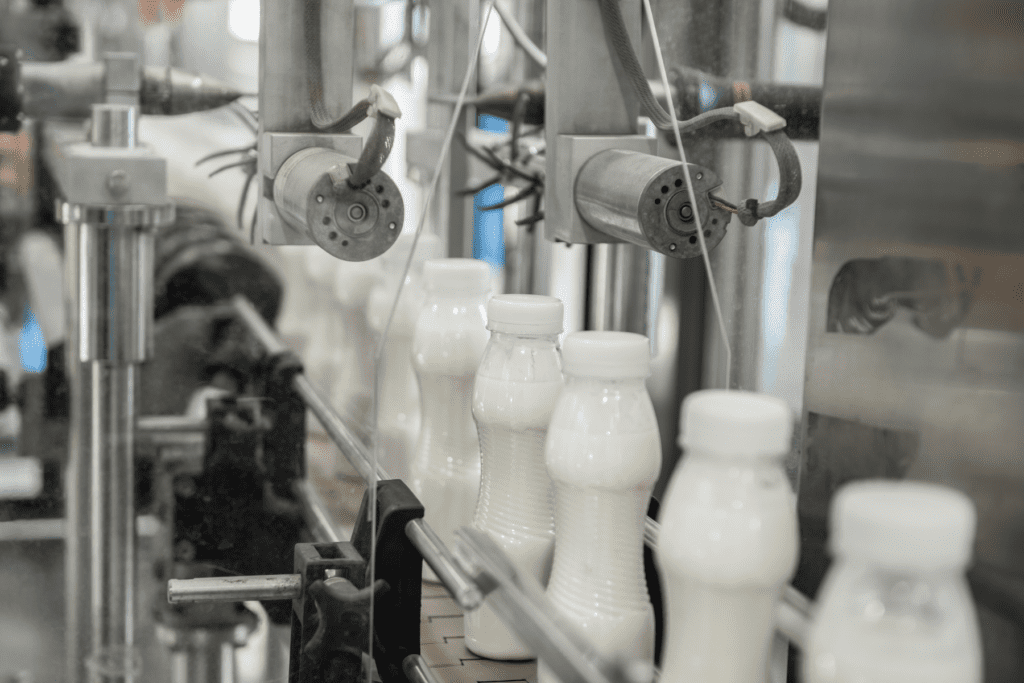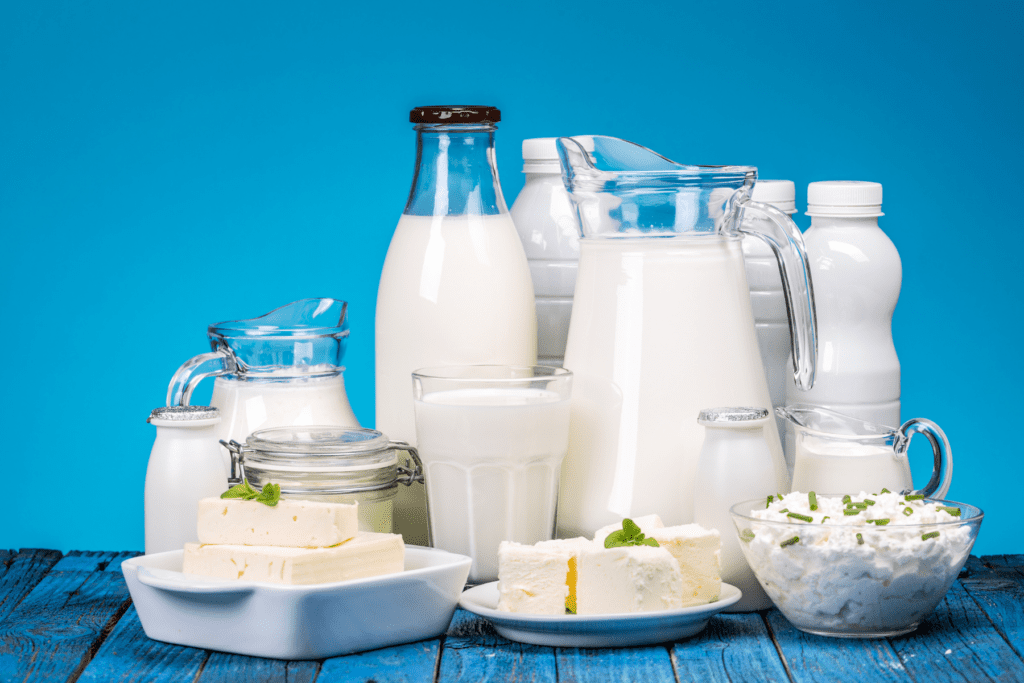World Food Safety Day is celebrated annually on 7 June to “draw attention and mobilize action to prevent, detect and manage foodborne risks and improve human health”. At IDF, we have interviewed Aurelie Dubois and Laurence Rycken, Science and Standards Programme Managers, who engaged in an interesting dialogue about food safety and its impact on nutrition.
How would you define Food Safety?
Aurelie Dubois: As we say, ‘If it is not safe, then it is not food’. All food is aimed for consumption and should be safe. Food safety convenes all the measures that can be taken to ensure that the handling, elaboration, and storage of foods are performed in a way that minimizes the risk for consumers and prevents them from becoming sick from foodborne diseases.
Laurence Rycken: Food safety is a prerequisite for ensuring people can consume healthy diets. Billions of people around the world rely on dairy for nutrition daily. Dairy products are nutrient-dense foods, supplying significant amounts of energy, protein, and micronutrients, including calcium, magnesium, selenium, riboflavin, and vitamins B5 and B12. Dairy is a staple food with traditions deeply woven into societies all around the world.
What does Food Safety specifically mean in dairy?
Aurelie Dubois: Milk is a nutritious and fresh product. It can be transformed into a wide variety of products for our pleasure and convenience, but also to preserve milk in a safe and nutritious manner, whether as yoghurts, cheese, butter, or milk powder. For dairy foods, there are several ways to ensure food safety, food preservation and food security. These include processes such as heat treatments, fermentation or ripening.
I believe that food safety culture is very strong in the dairy sector. Food preservation has been a key concern since the earliest days of Humanity. Among the numerous empirical processes that have been developed and passed down, fermentation is one of the oldest preservation techniques and it is still widely used in various food matrices beyond dairy. Fermentation produces beneficial effects in foods that undergo chemical changes caused by microorganisms such as bacteria or yeasts. Bioprotection is also a natural way to protect food against spoilage and harmful contamination. This helps keep food products fresh and safe throughout shelf life and it is also a way of reducing food waste. Nowadays, refrigeration associated with fermentation allows for a wider range of fresh dairy products to be available to consumers (yoghurts, creams, butter) and provides them with essential nutrients.
So safe dairy products are processed foods?
Laurence Rycken: the processing as described by Aurélie indeed helps safeguard our products. When I look at these processes, I see them to make available and accessible an extraordinary variety of dairy products to be consumed around the world, allowing it to be incorporated into various dietary patterns and across different cultures. Dairy products themselves form part of a high proportion of meal and food occasions. Dairy products are widely recognized as an integral part of healthy diets and a key source of essential nutrients. Based on the FAO database on dietary guidelines, 94 countries have these guidelines with 100% of them advising the consumption of dairy. This supports the overwhelming evidence that the consumption of milk, cheese and yogurt are part of healthy dietary patterns and are associated with positive health outcomes.
What does IDF do for Food Safety? How does IDF engage with other organisations to ensure Food Safety?
Aurelie Dubois: Safety is one of the four pillars upon which IDF’s work is based. We are engaged in a preventive approach for the safety of the dairy sector that starts with the implementation of good hygienic practices at the different points of the chain, from the farm to the fork.
Thanks to a wide network of worldwide experts with various backgrounds and expertise, at IDF we produce publications to share knowledge and best practices to mitigate risks along the dairy chain, such as promoting good agricultural practices, good milking practices for the primary production, good manufacturing and good hygienic practices for the transformation of raw milk into dairy products, in collaboration with international organisations and regional / national agencies.
IDF has also its own set of publications in the field of Food Safety, from straightforward field proof documents to scientific publications in peer review journals accessible from the academic institutes to the farmers and food workers. For example, we have recently published a bulletin on Heat Treatment of Milk, and the Bulletin of the IDF N° 514/2022: Inventory of microbial food cultures with safety demonstration in fermented food products.
IDF is involved in the standardization of methods of analysis and sampling together with the International Organisation for Standardisation (ISO) to ensure that the results of measurement are comparable. Many of the IDF/ISO standards are referenced by Codex Alimentarius to guarantee that the provisions in the dairy standards are verified with equivalent methods for that purpose. For example, IDF and ISO have finalized guidelines for the validation of qualitative screening methods for the detection of residues of veterinary drugs in milk and milk products. This new guidance will aid in the standardization of the different antibiotic surveillance programs across many different countries.
Another way to make an impact on food safety is by engaging with international organisations. IDF has been working since the earliest steps with the Codex Alimentarius, participating in the work of the different committees as an observer organisation, strongly implicated in the support and writing of the code of practices. IDF has significantly contributed to the development of the Codex Code on Hygienic Practice for milk and milk products, it has been implicated in the recent revision of the general principles of food hygiene, the guidelines for the establishment of microbiological criteria, and the code of hygienic practices for low moisture foods among many other documents of the Codex Alimentarius.
The IDF working bodies coordinate their respective actions to make sure that the dairy sector uses state of the art approaches and tools to ensure safe food production, to put the dairy sector in the best conditions to answer today’s as well as future challenges in order to provide the world’s growing population with a safe, sustainable and nutritious food sources.
What is the relation between Food Safety and Nutrition?
Laurence Rycken: It is increasingly recognized that the effects of milk and dairy foods on health extend beyond the benefits of the individual nutrients they contain. Rather, the unique combination of nutrients and bioactive factors, and how they interact with each other in the dairy matrix, combine to produce the overall effect on health. Dairy foods come in many different forms with complex physical matrices it varies from the solid matrix of cheese, to the gel-like structure of yogurt, to liquid milk. Many people associate milk and dairy with calcium and bone-building, but dairy foods offer much more extensive nutritional benefits and are linked to a variety of positive health effects. Systematic reviews and meta-analyses have shown that increased dairy consumption can protect against weight gain and obesity. Dairy may significantly reduce the risk of type 2 diabetes and associated cardiovascular diseases. One daily serving (>= 60 gram) of yogurt is associated with a 10-15% lower risk of type 2 diabetes. Further research will be needed to reveal more in depth insights about the benefits of looking at dairy foods as a matrix, including the mechanisms and pathways by which the different components work together and their impact on health.
Here are several factsheets on the health benefits of dairy: Health benefits of dairy/ The importance of the dairy food matrix/Dairys role in supporting a healthy immune system.
What do you think the main takeaways should be on this day?
Aurelie Dubois: In my opinion, World Food Safety Day serves as a reminder that food safety is key to all stakeholders involved in the food chain, from the producers to the consumers. International collaboration is fundamental, and it is essential that scientists, governments, farmers, processors and control authorities collaborate throughout the food chain to keep our food safe. This includes setting up appropriate legislation, import controls and educating consumers on how to respect basic safety rules whilst manipulating food and ingredients.
I also believe that World Food Safety Day is a good opportunity to remind the availability of all the tools, processes, regulations, and best practices in place at the international and national levels, to ensure consumers have access to safe and nutritious foods.
Laurence Rycken: Wholesome dairy products have an important role in high quality, healthy dietary patterns and are recommended by Food-Based Dietary Guidelines (FBDGs) across the globe. Especially in these exceptional times the primary function of food should not be overlooked, which is to nourish us all.











